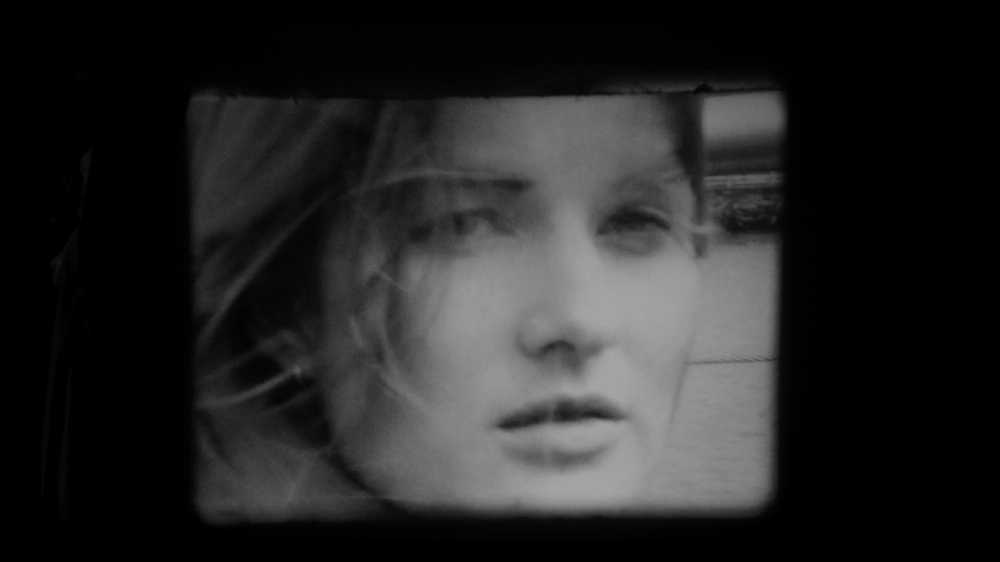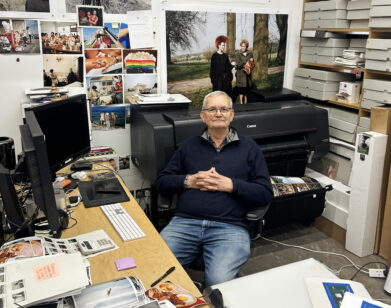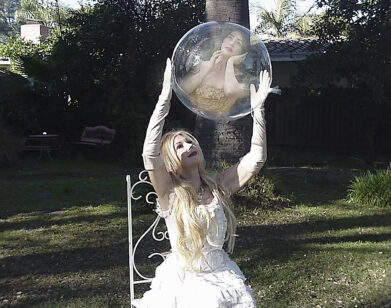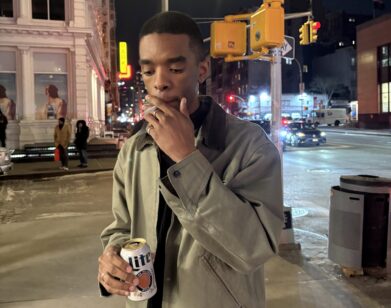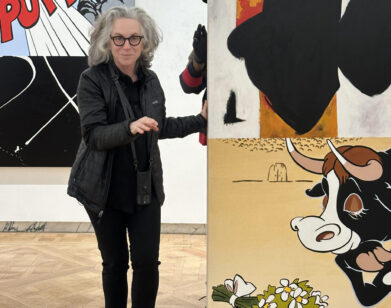Slater Bradley, to the Point
According to Google, Slater Bradley is sort of a “cult hero.” While we can’t speak for that epithet, there are some things we know without a doubt: Born in San Francisco, he’s a recent Berlin transplant. He came of age as an artist in New York City, working in photo and video. His work is in the permanent collection of numerous institutions, including The Guggenheim, Whitney, and Museum of Modern Art in New York. His newest show, “A Point Beyond the Tree,” opens today at Sean Kelly Gallery and features photos of his muse, Alina, taken over their two-year long distance relationship. We caught up with him at Sean Kelly as he was putting the finishing touches on his show.
KAYLA TANENBAUM: This show features a lot of photographs of your muse. Do you think that the muse is kind of a throwback concept?
SLATER BRADLEY: Yeah, in what sense?
TANENBAUM: When I hear the word “muse,” I think of either Greek epic poets calling to the muses or a 19th-century painter and his mistress who lives in his apartment and he paints her.
BRADLEY: I think of more of a photography thing: Man Ray, Lee Miller. The muse as this almost like butterfly-like thing that you can’t possess, but you can capture it, and it’s fleeting.
TANENBAUM: Did these photos come about spontaneously, or did you have a project in mind?
BRADLEY: I like to make work about things that make me feel uncomfortable, and relationships that make me feel uncomfortable, and I thought it made me feel very uncomfortable to meet somebody and photograph them naked in my apartment, lit by the sunlight from the window. By then, the Doppelganger project was like, “We’re going to shoot in the Museum of Natural History,” and there were so many logistical things—I needed to just do something spontaneous and intimate. And then I started to go back into the photography thing because photography’s so difficult and so ubiquitous, and there’s so many fucking images, it’s like how do you stop? Not stop—how do you slow down the consumption of these images?
TANENBAUM: That’s interesting.
BRADLEY: So I started to alter the pictures by markering out the backgrounds. I went to the Episcopalian Cathedral School for Boys in San Francisco. So I’m sure a lot of this sort of Byzantine-style, halo-style thing grew out of going to church nine years, four days a week. Anyway, these photos do the same thing that film posters do, which is take out the background and make the subject more iconic.
But one interesting thing that I figured out this year, doing this project, is that the way I do them looks an awful lot like the rings of a sequoia tree, or tree ring growth. A lot of it for me was about time, and spending a lot of time with an image, and after the relationship with Alina kind of went off in separate ways, I spent like a year following through with this project. And people really loved the images, and just generated this momentum that was like torture—to look at these images and sit there and draw them, and it’d take me two weeks for a big one.
TANENBAUM: You said this project was kind of like documenting your relationship. Do you feel weird about making that public by showing it?
BRADLEY: Yeah. I envy people that have separate lives—that their job is one thing, their personal life [is another]. I’ve never been able to have that going on for me. I always try and keep some distance. I mean you can never give everything, so there is some distance, but it’s pretty raw on some levels.
TANENBAUM: Is Alina okay with it?
BRADLEY: Yeah. It’s a really beautiful thing. We both completely changed each other’s lives, and I think we both carry around the feelings in our hearts, but it was just something that was not destined to work. It had its time and its place, and it was an amazing journey and life-transformative experience, and I completely learned a lot since then and have been reborn in Berlin now.
TANENBAUM: Were you always spiritual in this way?
BRADLEY: I’ve always remembered birthdays and dates. I knew it was just a matter of time before I found away to access it. A couple years ago, I felt like I was in a dead end, and I kept asking myself, “How do you get out of a dead end?” People would say the answer is, “You just turn around.” But that was not the answer that I was going to accept. I realized, for me, that getting out of a dead end was literally the world turning upside down, and I had to fall out of the dead end. So you have to surrender, so I’ve really learned how to surrender, practice unconditional love. With my art, I’ve always put out things I love.
TANENBAUM: If your work doesn’t necessarily look different because of your spirituality, do you find that maybe the way in which you go about creating it or the mindset you’re in feel different? Is there something different in your work life now, would you say?
BRADLEY: Yeah, there’s a lot of momentum. Things take on different momentums. Like with this whole series, it was just a journey, but I was going into the unknown. I didn’t know what was happening, and I didn’t know how it would manifest in art. I was always thinking about [Charlie Ray’s project for Parkett], and I wanted to sort of talk about that piece, because nobody talks about that piece. Beauty in the art world is kind of a dirty word. And I think a thread in my work is it’s always beautiful, and so this was on my mind and then I met Alina at a party, and then I was like, “Wow, this is the girl who’s going to—I’m going to pursue this inquiry,” and so I began a whirlwind crazy tornado experience where the photos became just sort of a record of what had happened, or where we had been.
TANENBAUM: When talking about other artists, you also mentioned [fashion photographer] Nick Knight. Did you read his interview about Instagram and fashion photography?
BRADLEY: God, I think photography is so hard. To be working in video and photography the past 20 years—because I was doing it in high school—you’re dealing with mediums that change culture. The way they are distributed, disseminated—it’s changed so dramatically. One of the things I always like to do is look at the structure of something and detach myself from the structure and figure out how to slightly alter it. So if the structure [itself] is constantly liquidated, it just really is difficult for me to really even know what to think of Instagram.
TANENBAUM: Do you have an account?
BRADLEY: No. I can’t look at—you know, I’m Pisces moon, okay? So I’m like sponge culture. I sponge anything. So I can’t look at images. It’s hard for me to be in New York because there’s too much happening. I have to create that force field around myself. So for me to actively go and look [at images], it’s just too much. It affects me in a really bizarre way.
SLATER BRADLEY’S “A POINT BEYOND THE TREE” IS ON VIEW AT SEAN KELLY GALLERY STARTING TOMORROW, DECEMBER 14, AND WILL RUN THROUGH JANUARY 25.

